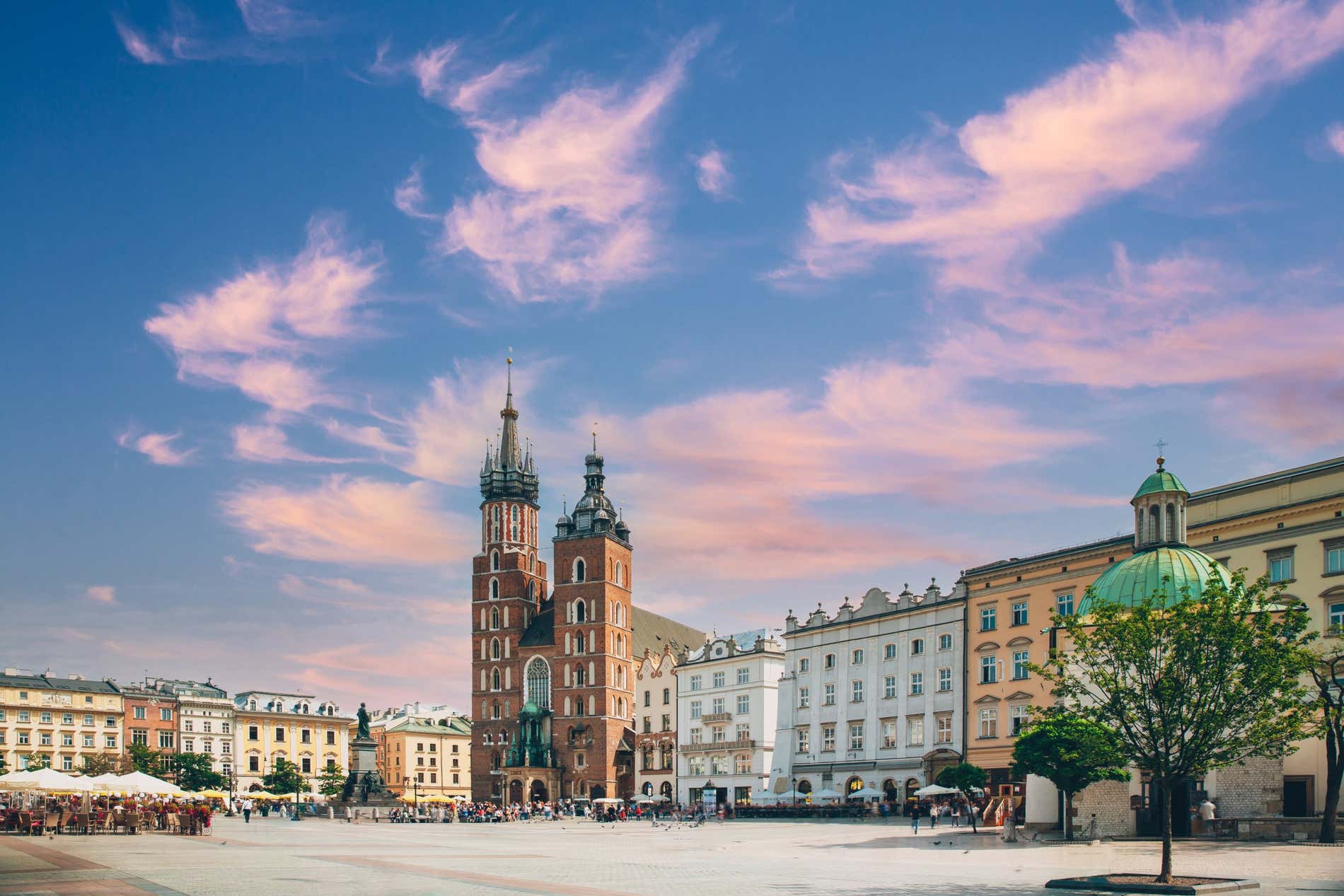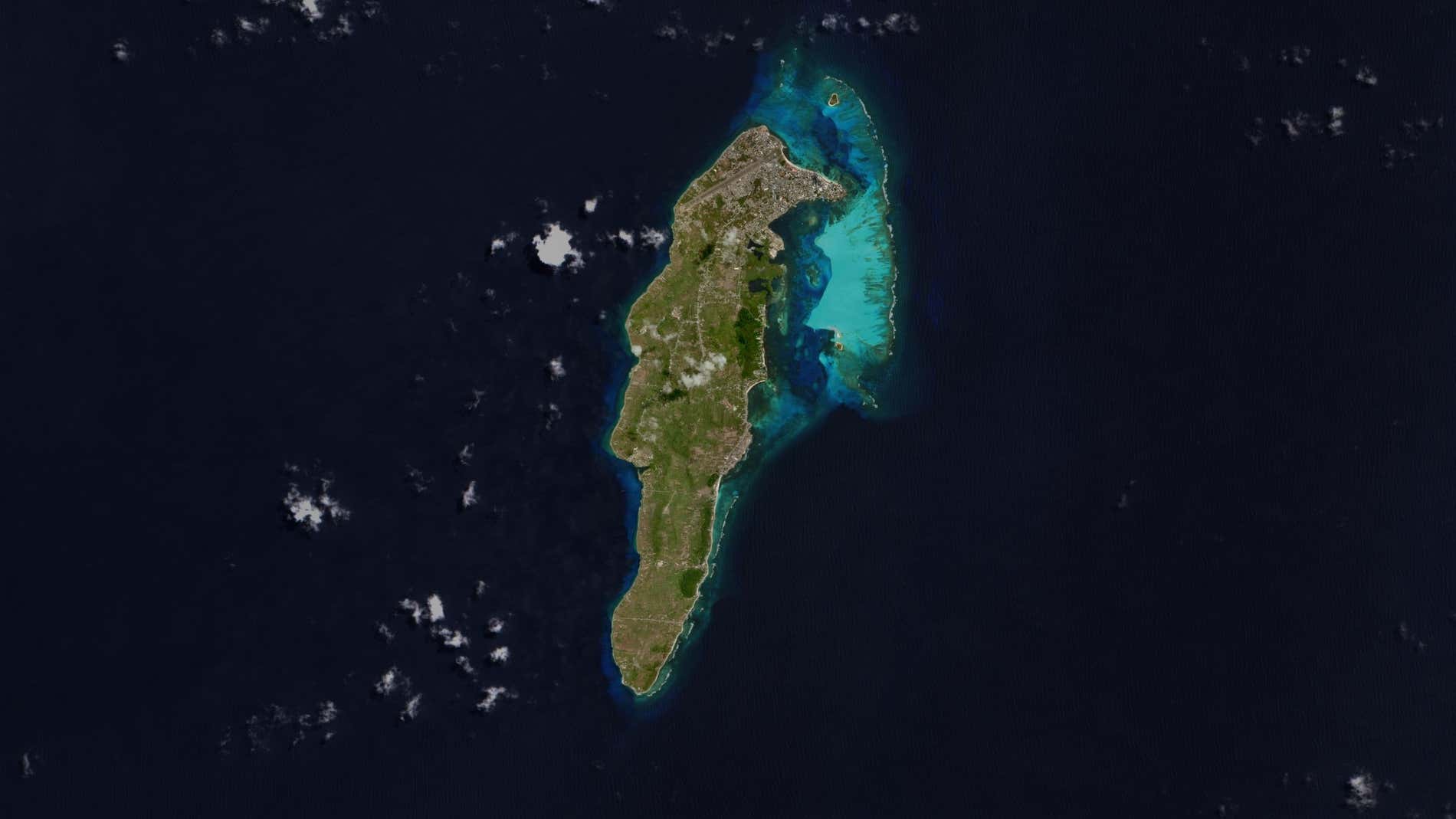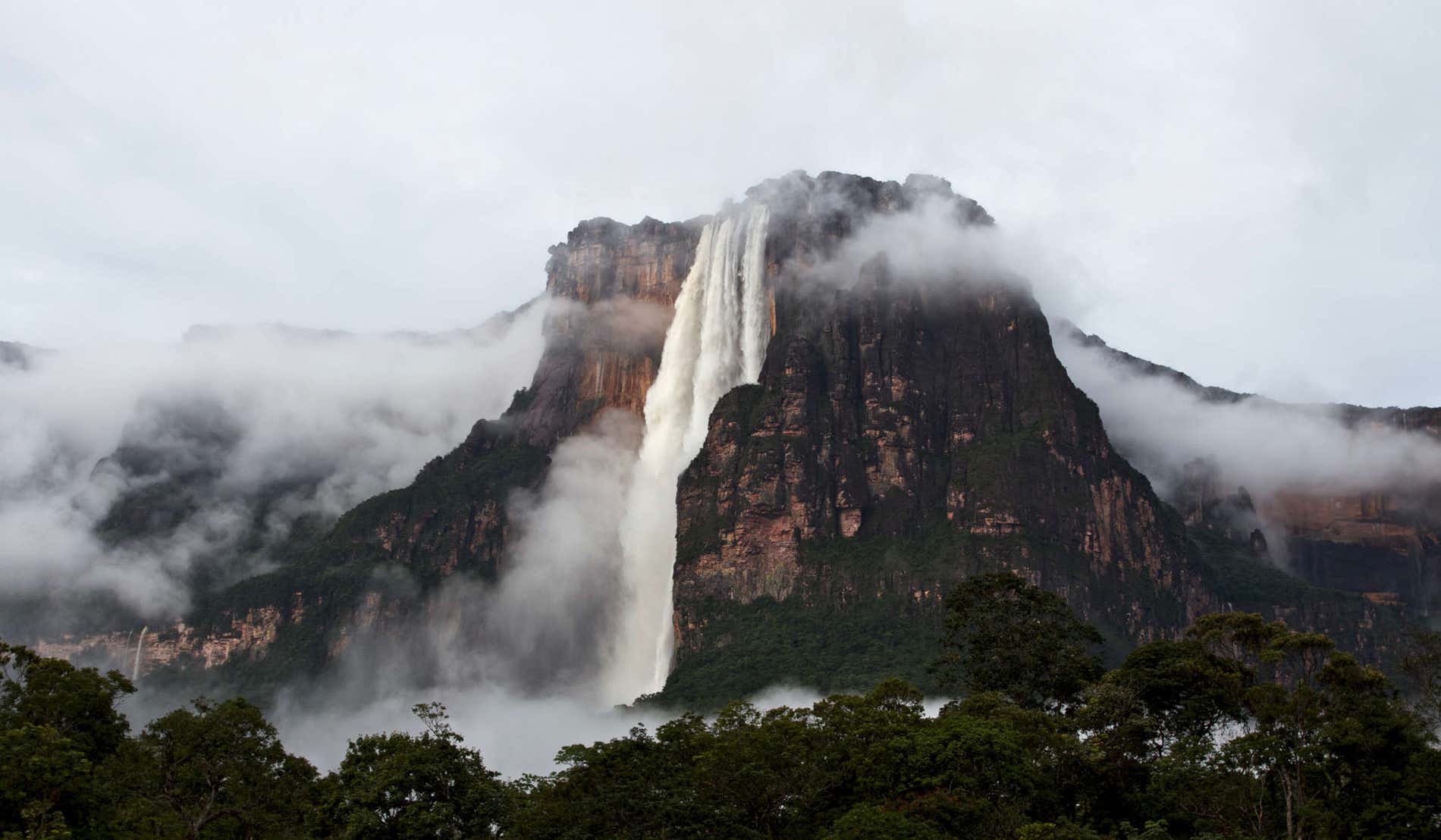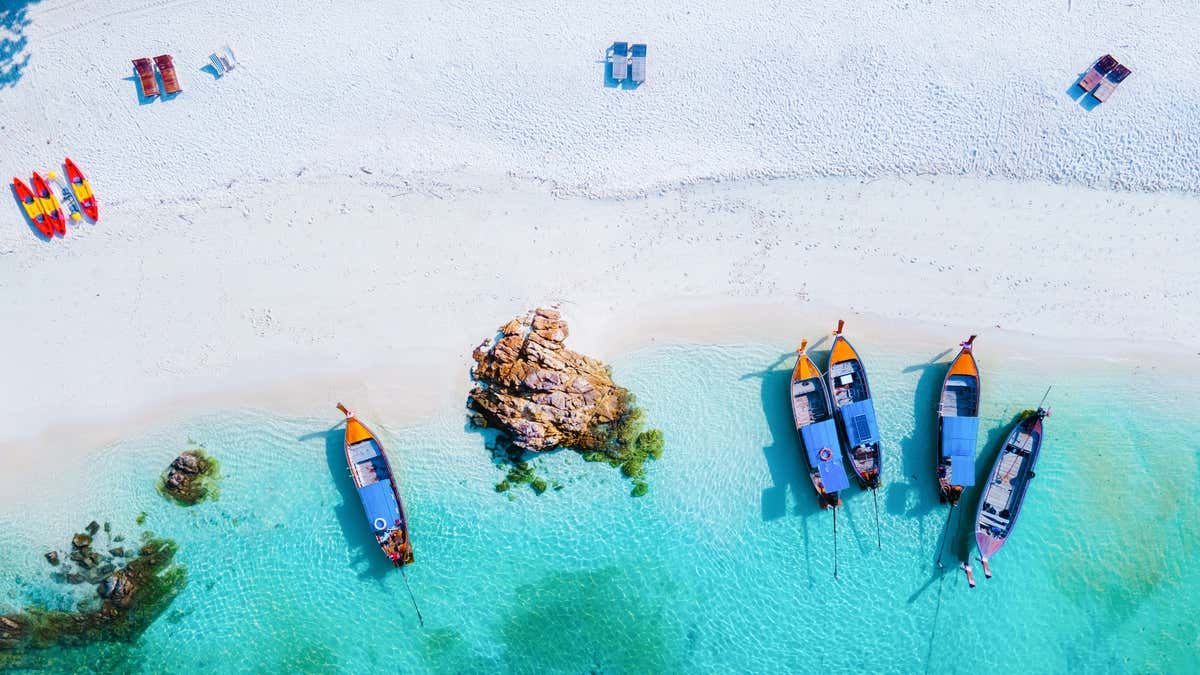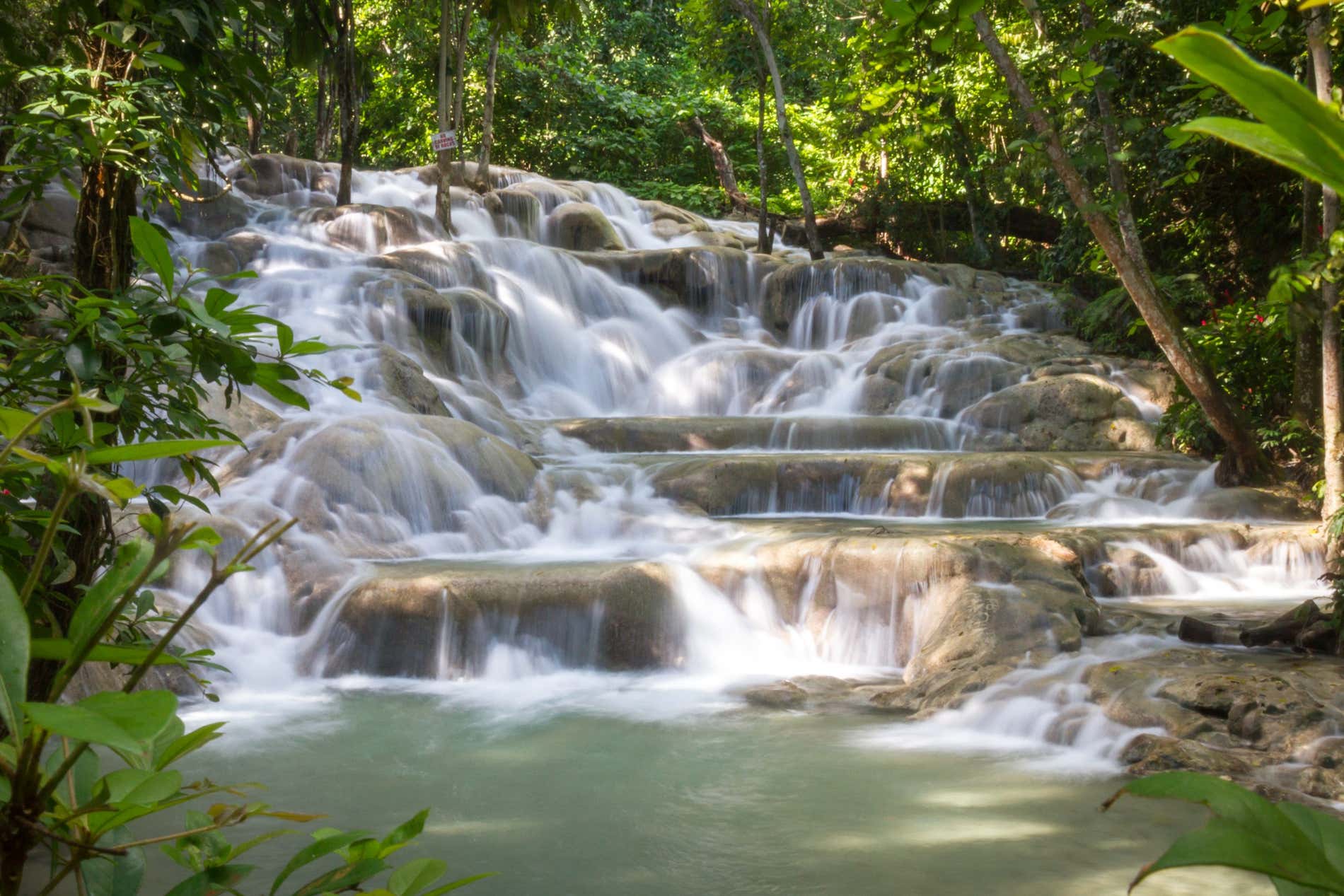What to Do in Uzbekistan: The Heart of Central Asia
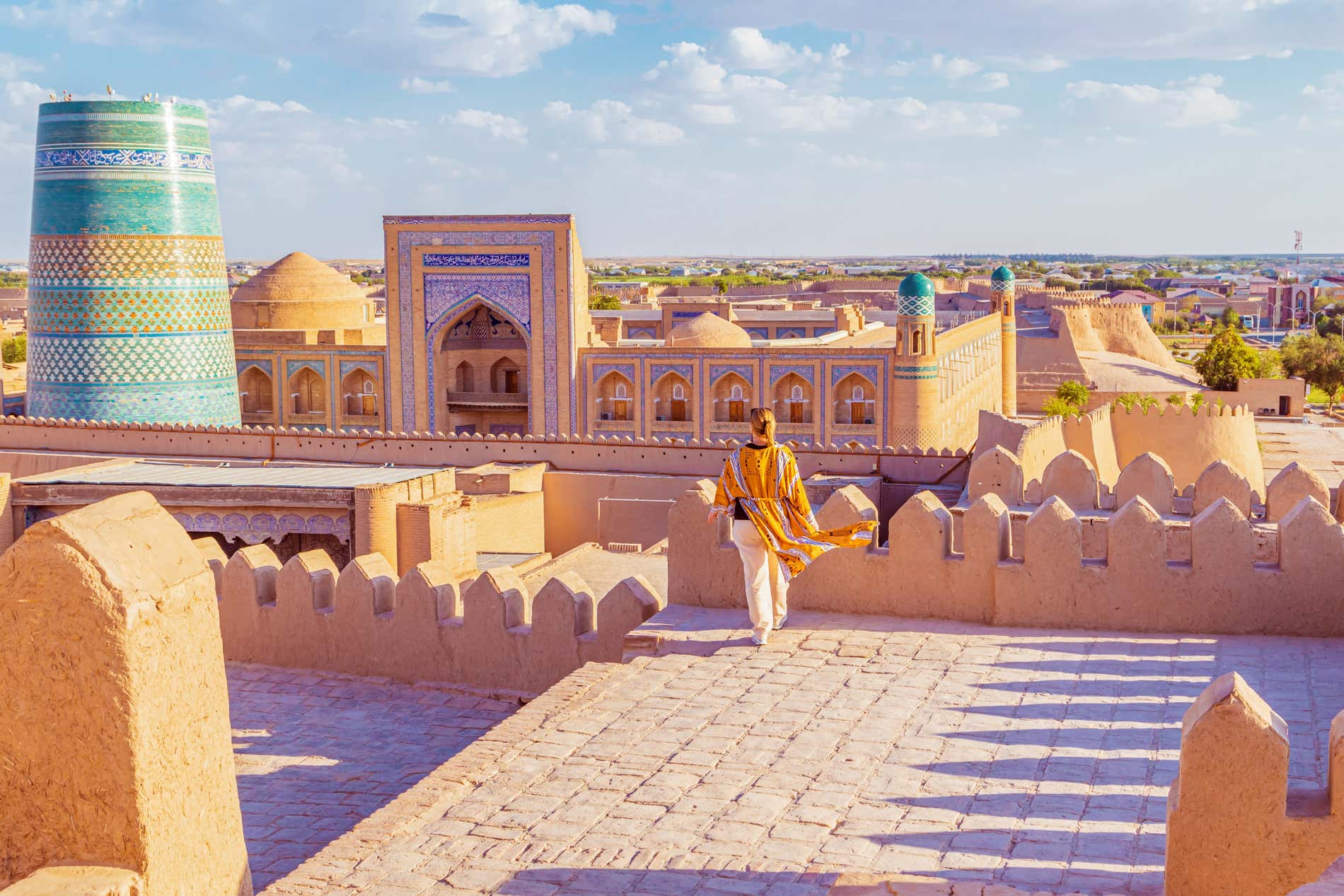
If you’ve ever dreamed of traveling along the ancient Silk Road, Uzbekistan should be at the top of your list. From dazzling Islamic architecture and desert landscapes to bustling bazaars and rich traditions, this Central Asian gem is packed with history, beauty, and authenticity. Despite being split in two by the desert and having no coastline, Uzbekistan has seen its culture flourish over the ages.
If you’re looking for inspiration for things to do in Uzbekistan, you’ve come to the right place! At Civitatis, we’ve put together a list of the country’s unmissable highlights. If you’d rather not organize everything yourself, you can always book this private 6-day tour of Uzbekistan. All you have to do is book your flights to and from Tashkent—we’ll take care of the rest.
1. Explore Tashkent: A Capital Brimming with History
What better place to start than in the capital? Tashkent is a city of contrasts, where you’ll mostly find modern buildings, many of which were constructed in the Soviet brutalist style. This is because much of the city was leveled by a devastating earthquake in 1966 and had to be completely rebuilt. Still, some historic landmarks remain, such as the Hazrati Imam Complex, a 16th-century religious site dedicated to Hazrati Imam.
Among the newer architecture, Tashkent’s metro system really stands out. Each station is richly decorated with sculptures and murals so ornate that it’s often compared to the metro in Saint Petersburg, Russia. You’ll be amazed!
Tashkent also makes a great base for exploring other parts of the country. For example, you can take a day trip to Lake Charvak and the nearby resort towns of Amirsoy and Chimgan, perfect for cooling off during hot Uzbek summers. As well as that, since Tashkent lies near the eastern border, it’s easy to cross into neighboring countries. Some of our recommendations would be a day trip to Khujand, one of Tajikistan’s most charming cities. Another great place to visit is Shymkent, a major urban center in Kazakhstan. You can get there easily by booking this private day trip from Tashkent.
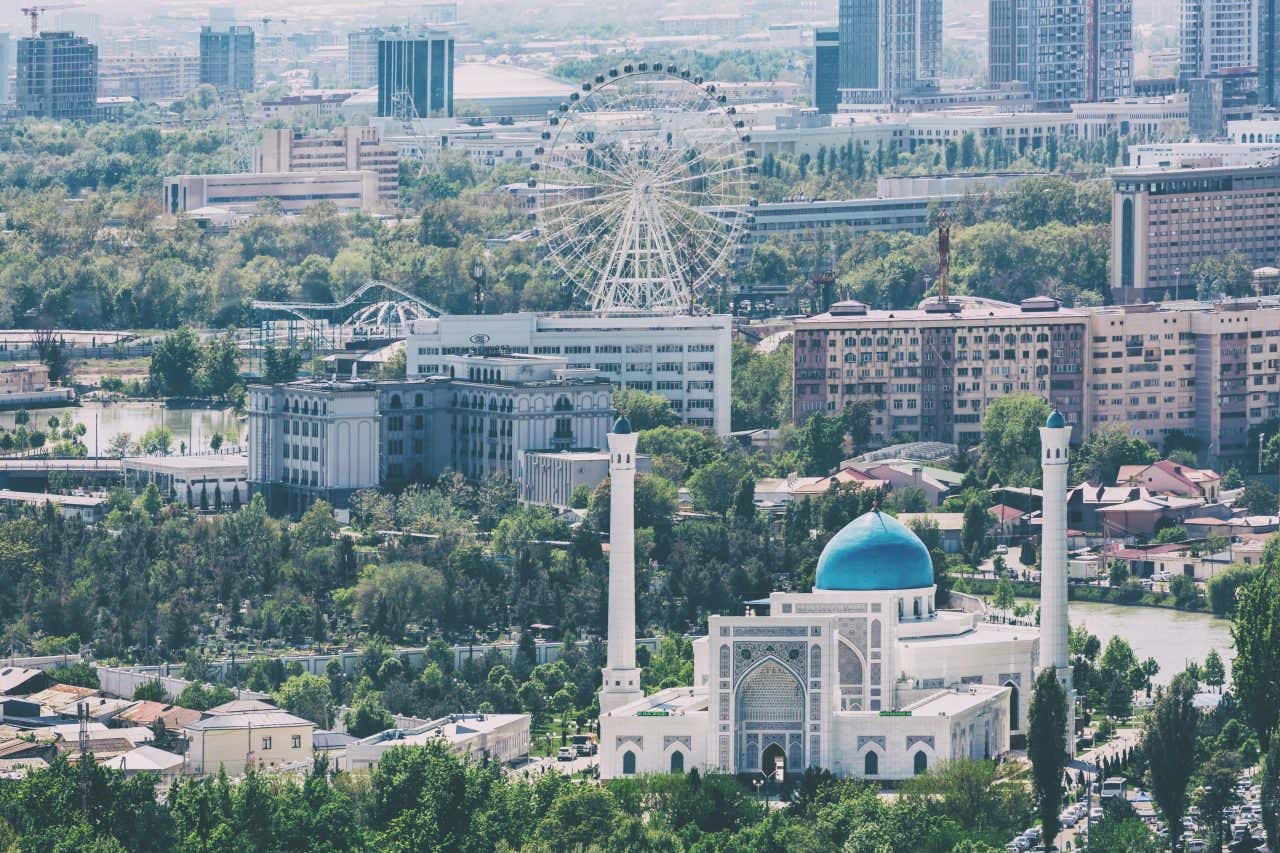
2. Marvel at Stunning Landscapes in The Fergana Valley
To explore a lesser-known side of Uzbekistan, venture into the lush Fergana Valley in the east of the country. This fertile region is home to a mix of ethnic groups and centuries-old artisanal traditions.
In Margilan, you can visit the Yodgorlik Silk Factory, where silk is still hand-woven and dyed using natural pigments. The town of Rishtan is famous for its bright blue ceramics, made with locally sourced clay and passed down through generations. Kokand, once the capital of a powerful khanate, boasts elegant mosques, madrasahs, and a palace with stained-glass windows and intricate woodwork.
If you’d like to see the best of the Fergana Valley without missing a thing, we recommend joining this 2-day tour from Tashkent. That way, you won’t have to worry about organizing transport to and from Tashkent. Plus, you’ll be accompanied by a guide who knows the top places to visit as well as hidden gems!
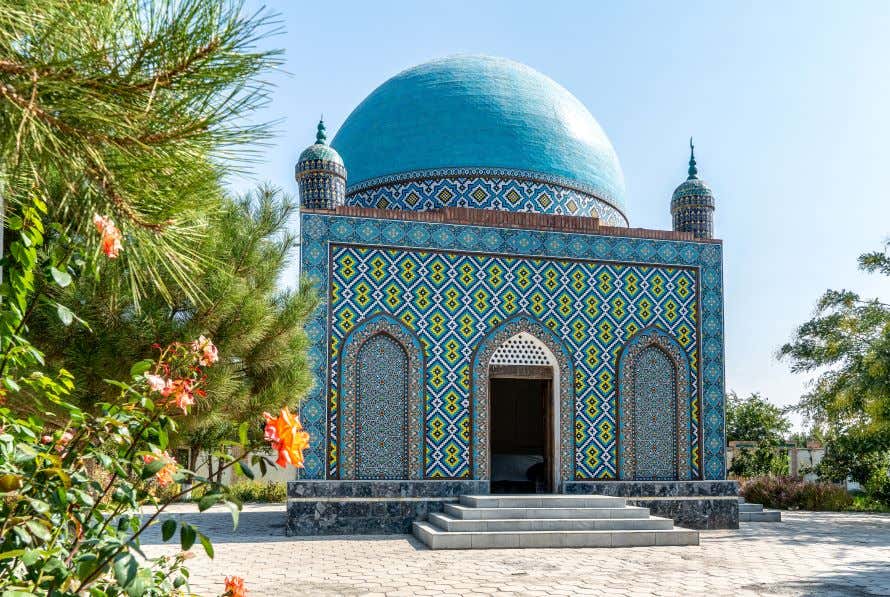
3. Step Into the Past in Samarkand
Next up on our list of things to do in Uzbekistan is to visit Samarkand. From the capital, you just have to hop on one of Uzbekistan’s high-speed trains, and you’ll get to Samarkand in just over two hours. This city is the country’s cultural heart and a UNESCO World Heritage Site. The historic center remains a snapshot of the city’s golden age, when it served as the capital of the Timurid Empire.
Explore the city on a private guided tour, starting with the majestic Gur-e-Amir Mausoleum, the final resting place of the legendary and fearsome conqueror Timur, also known as Tamerlane. Another highlight is Registan Square, a breathtaking square framed by three stunning madrasahs. Once a hub for Silk Road caravans, it still dazzles visitors with its colorful mosaics and intricate tilework. Don’t forget to snap some photos!
Want to trace the paths of merchants and explorers like Marco Polo? Venture into the nearby Kyzylkum Desert, a vast sea of sand stretching across Uzbekistan, Turkmenistan, and Kazakhstan. You can even book a 2-day desert adventure and spend the night in a traditional yurt. Sounds fun, right?
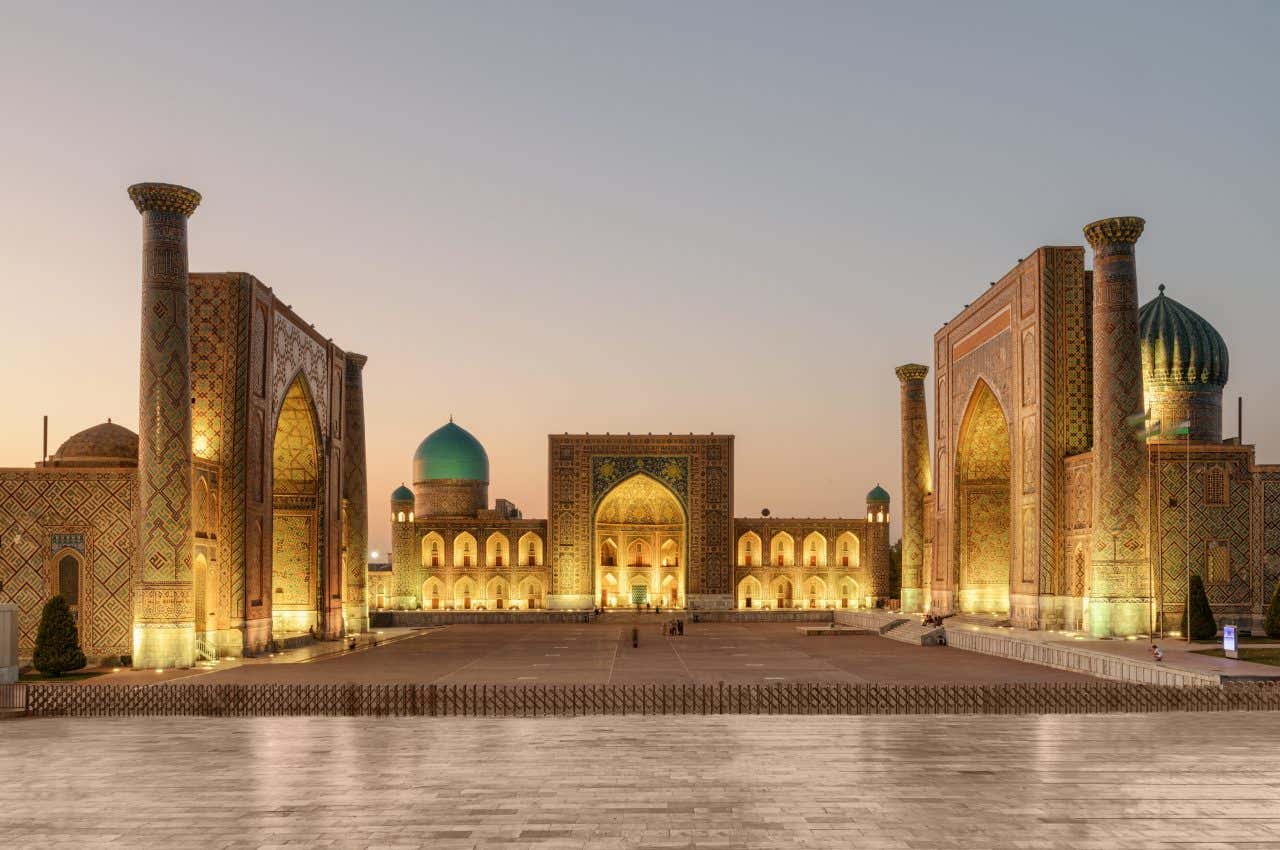
4. Visit Shahrisabz: The Birthplace of a Conqueror
Not far from Samarkand lies Shahrisabz, also known as “the green city.” It’s one of the oldest cities in Uzbekistan and the birthplace of Timur in the 14th century. In fact, it was from here that he launched his campaign to reclaim Central Asia from Mongol rule.
The city is full of fascinating historical sites: crypts, mosques, necropolises, and the towering ruins of ancient imperial palaces. A standout landmark is the Ak-Saray Palace, a UNESCO World Heritage Site that will take your breath away. This palace was built in the early days of the Timurid Period, under the instruction of Timur in the hopes that Shahrisabz, which was called Kesh at the time, would become the capital of his empire. Unfortunately, the palace, as well as much of Shahrisabz, was destroyed in the 16th century during the reign of Abdullah Khan II. After Uzbekistan’s independence, a huge effort was made to conserve as much of the palace as possible.
If you want to deep-dive into the city’s history, book this private tour of Shakhrisabz from Samarkand. You’ll be in awe of the city’s rich history and stunning monuments.
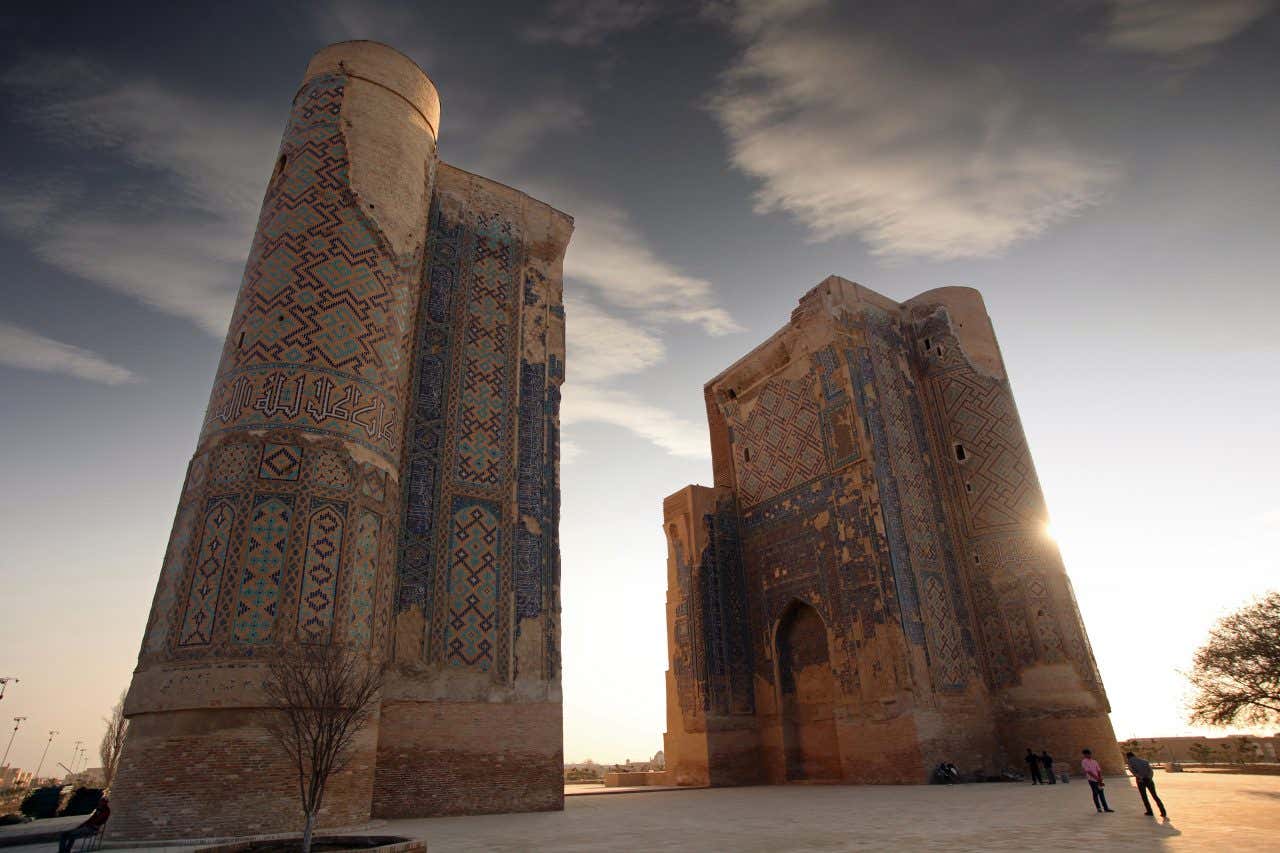
5. Dive into Uzbek History in Bukhara
Bukhara may be small, but it’s brimming with history. Did you know that the land around Bukhara has been inhabited for at least five millenia? The city itself is over 2,000 years old. Known for its many madrasahs, which are Islamic schools that were once major centers of education and spirituality, the city now features artisan workshops and traditional bazaars under domed roofs.
A must-see landmark is the Ismail Samani Mausoleum, which was hidden under sand for centuries to protect it from Mongol invaders. Rediscovered in 1934, it now stands restored, showcasing both its grandeur and intricate detail. Nearby, you’ll find what appears to be a carpet bazaar—but is actually Uzbekistan’s oldest mosque, built atop the ruins of an ancient Buddhist temple.
To fully appreciate the city’s architecture and history, take a private tour of Bukhara with a knowledgeable guide who will walk you through centuries of fascinating stories.
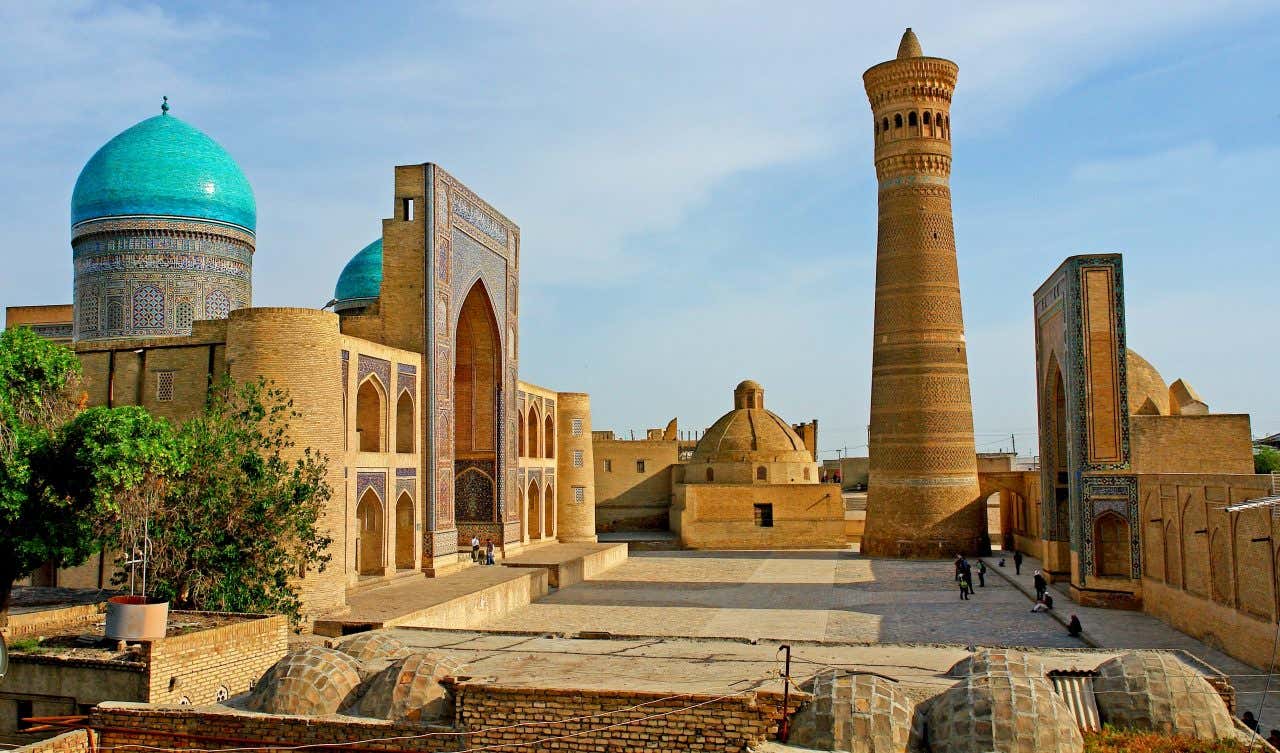
6. Step Into a Fairy Tale Setting in Khiva
Khiva is, without a doubt, one of the most beautiful cities in Uzbekistan. The first thing you’ll notice is its impressive ancient walls. Built in the 14th century, they encircle a treasure trove of Islamic sacred art. The city is full of colorful tiled mosques, madrasahs, and minarets.
One iconic structure is the Kalta Minor Minaret, which was meant to be the tallest in the country. However, it was never finished after the death of the sultan who commissioned it. Another gem is the Juma Mosque, a vast hall supported by a forest of intricately carved wooden columns, each one unique, adorned with vegetal patterns and Kufic script.
Explore these sites and more with a guided tour of Khiva, and visit fascinating museums that showcase Uzbek history and culture. At the Museum of Scholars, you’ll learn about luminaries like Avicenna, a famed doctor and philosopher from Bukhara, and Al-Khwarizmi, the Khiva-born mathematician who introduced the concept of the algorithm.
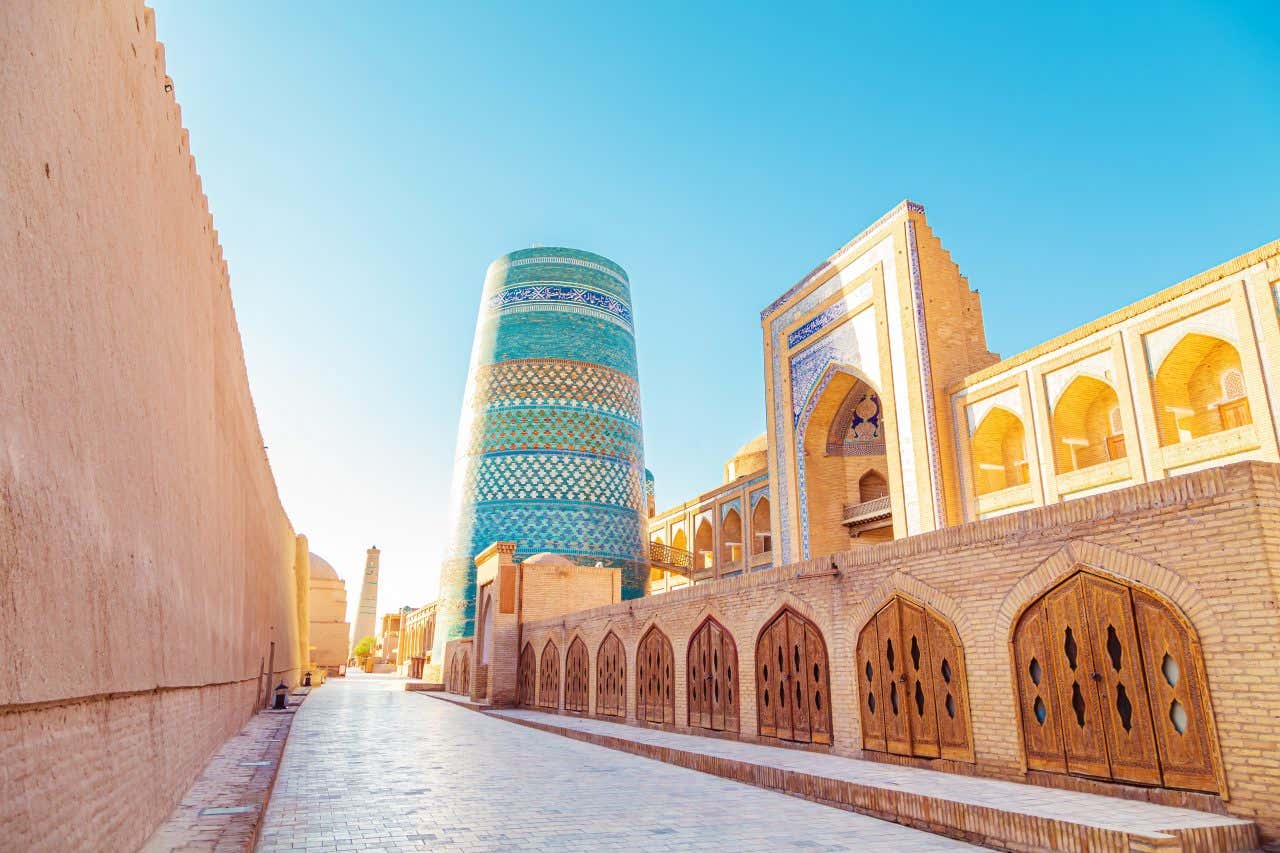
7. Learn about the History of Nukus and the Aral Sea
Perhaps one of the most intriguing places in Uzbekistan is the autonomous Republic of Karakalpakstan, located in the northwestern part of the country, where Nukus serves as the capital. This remote region is home to the Karakalpaks, a proud ethnic group with ancient traditions rooted in fishing and herding.
Once one of the most fertile areas in Central Asia, the region benefited from the Aral Sea, a salt lake that was so large it was called a sea. However, in the 1960s, under Soviet rule, the lake’s waters were used to irrigate vast cotton fields. Though initially successful, this move caused an environmental disaster. The lake slowly dried up, leaving behind a graveyard of ships stranded in a barren desert.
On this 2-day trip to the Aral Sea, you’ll witness the scale of this catastrophe firsthand. However, you’ll also see signs of hope as nature slowly begins to reclaim the land.
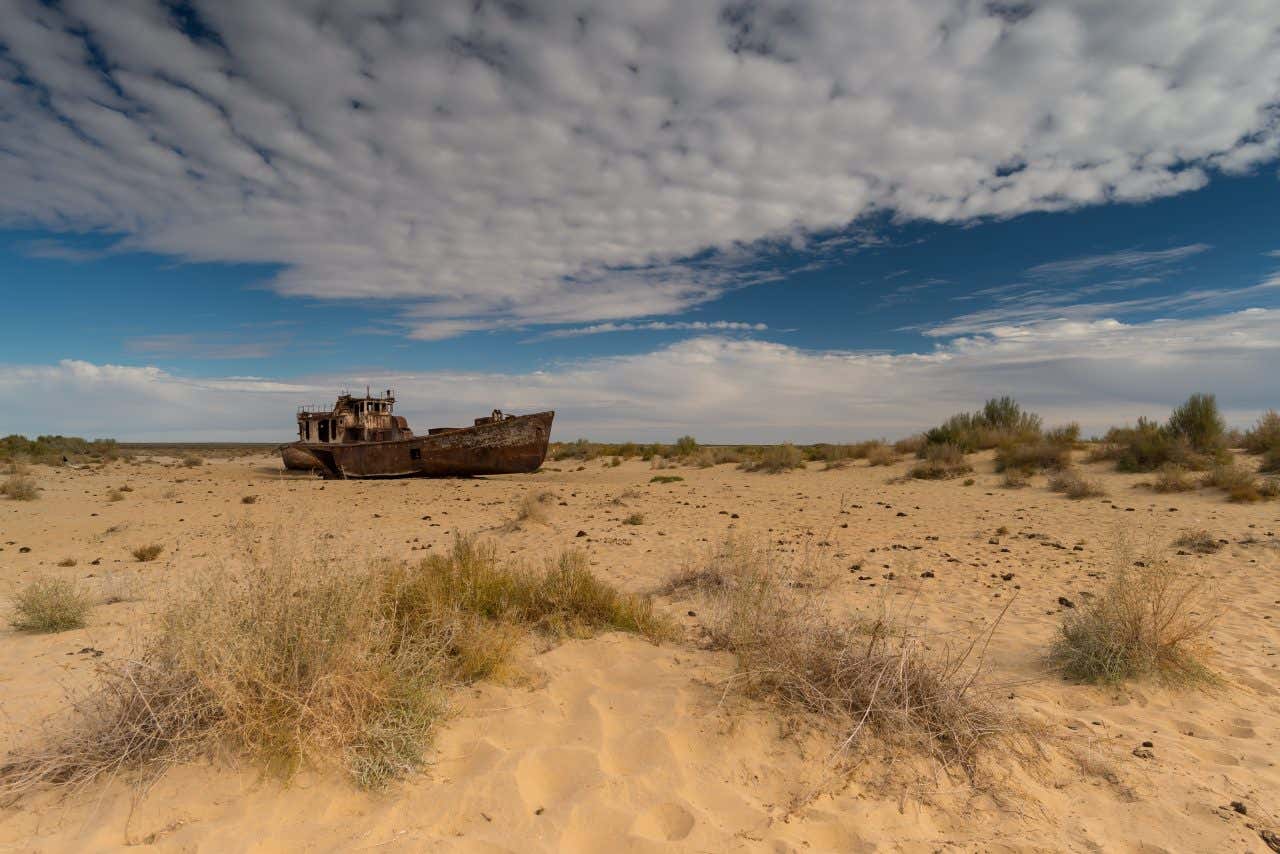
8. Try Traditional Food in Uzbekistan
Uzbek food is a rich fusion of Turkic, Persian, Russian, and Mongol influences. It’s hearty, flavorful, and always served with generous hospitality.
The national dish is plov, a mix of rice, lamb, carrots, and spices. Plov is slow-cooked to perfection and often served on special occasions. Another dish to try is lagman, a noodle dish with meat and vegetables, and shashlik, grilled skewered meat, are also staples. Be sure to also sample some manti, steamed dumplings, which are often filled with lamb or pumpkin and topped with sour cream.
Every meal is accompanied by non, a round flatbread baked in clay ovens, and endless cups of green tea. Finish off with sweet melon, dried fruits, or halva, a traditional dessert often made with ground sunflower seeds or sesame seeds, and sweetened with sugar syrup.
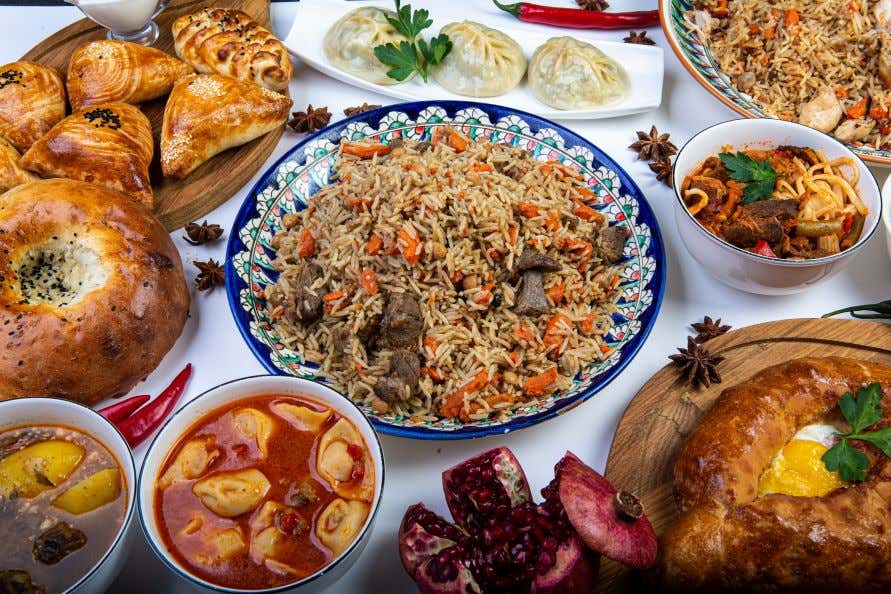
Uzbekistan Travel Tips
Uzbekistan is a land of contrasts, rich in history and cultural diversity. Here are a few things to know before your trip:
- Among all the surrounding countries in Central Asia, Uzbekistan is the most landlocked—it’s surrounded entirely by other landlocked nations.
- It boasts some of Central Asia’s most stunning artistic and cultural heritage, especially in Samarkand, a crucial stop on the Silk Road.
- Uzbekistan was part of the Soviet Union, gaining independence in 1991.
- The local currency, the Uzbek som, is one of the least valuable in the world. That means your money goes far—meals and accommodation are incredibly affordable (about 15,000 sum equals 1 euro).
- The official language is Uzbek, but Russian is still widely spoken, and English is commonly taught in schools.
- Don’t miss a stop at the bazaars, where you’ll find some of the world’s finest textiles and traditional crafts.
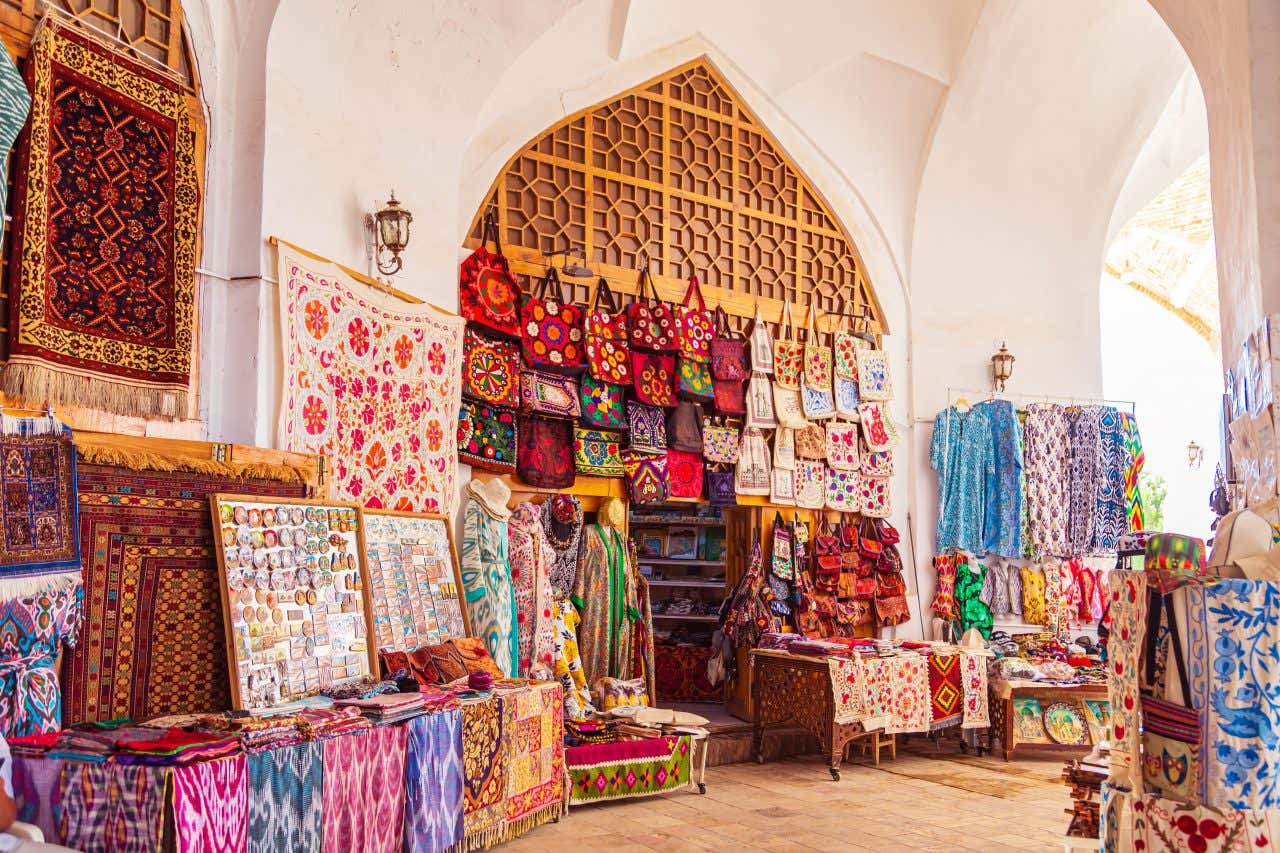
When Is the Best Time to Visit Uzbekistan?
The best time to visit Uzbekistan is during spring (April to early June) and autumn (September to early November), when the weather is mild and ideal for exploring cities and outdoor landscapes. Summers can be extremely hot, especially in desert regions like Khiva, while winters are cold but quiet, offering a unique and peaceful way to experience the country’s historic sites without the crowds.
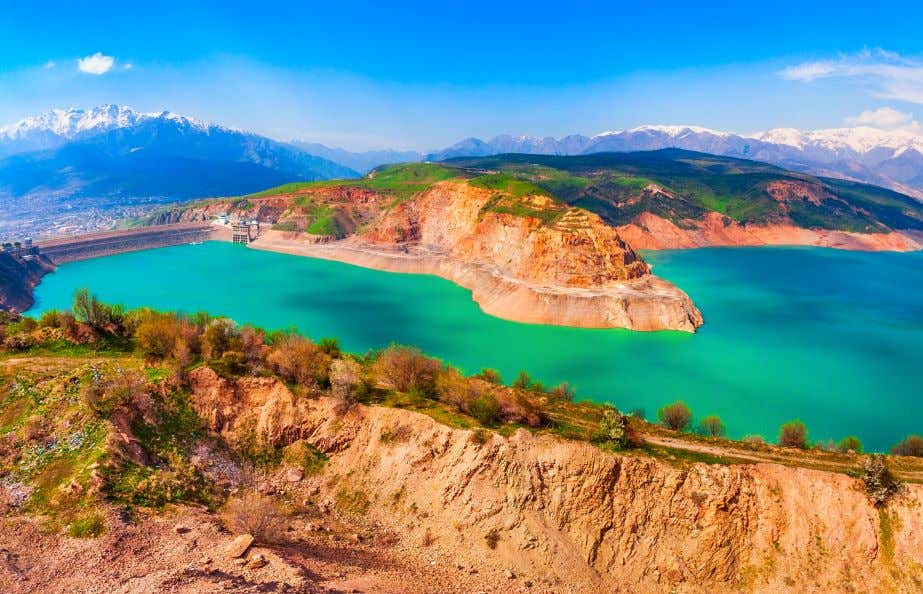
From the timeless cities of Samarkand and Bukhara to the remote deserts and vibrant craft villages of Fergana, Uzbekistan offers something for every traveler. Whether you’re chasing Silk Road legends, uncovering ancient ruins, or eating your way through lively bazaars, there’s no shortage of unforgettable things to do in Uzbekistan.
Ready to turn your dream trip into a reality? Head to Civitatis to browse our full catalog of experiences and unforgettable things to do in Uzbekistan.





